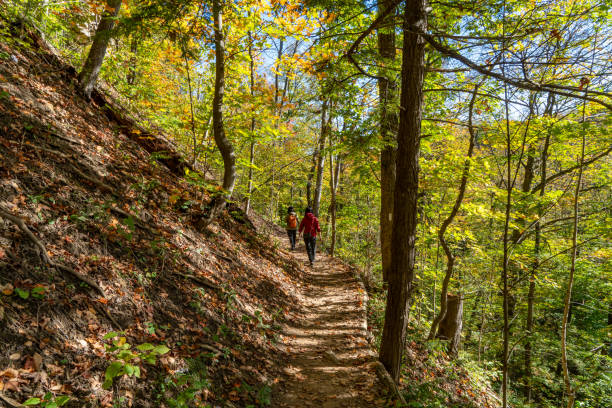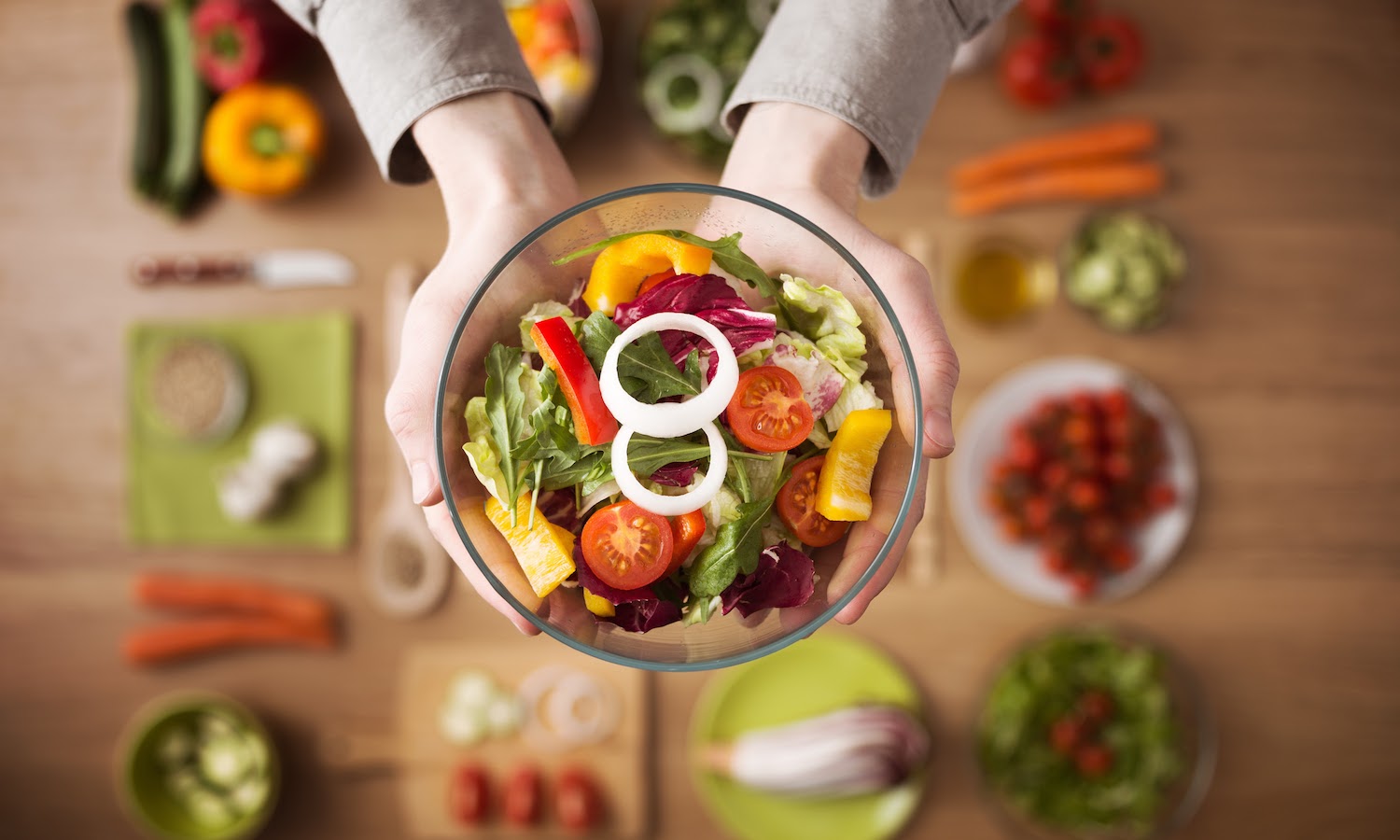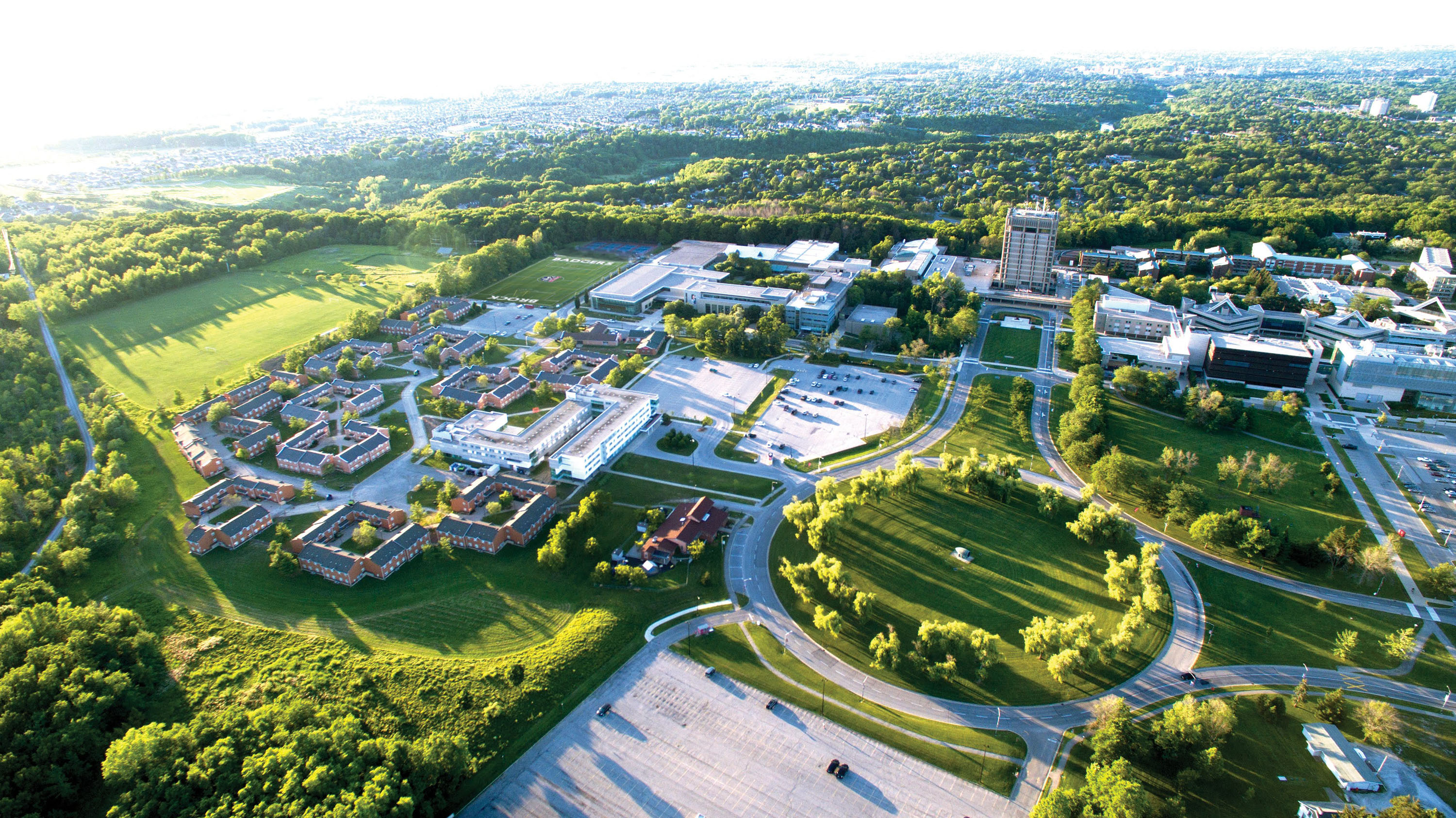
By: Thurkkha Thayalalingam
Situated on the Niagara Escarpment, Brock University is one of a handful of Canadian Universities located within a UNESCO Biosphere Reserve. Biosphere reserves support conservation and sustainable development and aim to “provide local solutions to global challenges.” (UNESCO, n.d.) The Niagara Escarpment is home to many beautiful walking trails, some of which are even located steps from the Brock campus! If you’re looking for a fun summer activity to connect with nature, here are some trails that you can check out this summer. Make sure to bring a camera as these trails can have some amazing views and lookout points!
Bruce Trail
Nearly 900 kilometres long, the Bruce Trail is the oldest and longest continuous trail in Canada (Bruce Trail Conservancy, n.d.). With many access points throughout the trail, it is great for hikers or bikers of all experience levels! The Niagara section of the Bruce Trail (10.6km) is considered a relatively easy route and the average completion time is just over two hours. More information on this portion of the Bruce Trail can be found here.
Laura Secord Legacy Trail
The Laura Secord Legacy Trail spans 32km from Niagara-on-the-Lake to Thorold and can be hiked in full or done in shorter sections. This medium-difficulty trail spans through both forested trails and urban paths and is split into five stages. The two stages closest to the university are from Rodman Hall to Rotary Park, and Rotary Park to Decew House. A comprehensive trail guide is made accessible online by the Friends of Laura Secord here and details on the trail are available here.
Merritt Trail
Merritt Trail is a 10km point-to-point trail near downtown St. Catharines that takes about two hours to complete. It is a popular biking or hiking route along the Twelve Mile Creek that is considered an easy route. Click here for additional details on the Merritt Trail.
Twelve Trail
The Twelve Trail also runs along the Twelve Mile Creek. Starting near downtown St. Catharines, the trail follows the creek south towards the Decew Falls generating station. You can also make a detour and head to Short Hills Provincial Park which is just a 30-minute walk from the generating station! More information on this trail can be found here.
St. Catharines Waterfront Trail
If you’re looking for something more urban, the 10km long Port Weller Waterfront Trail is a great option. This path goes through Port Dalhousie which features a busy harbour, a live theatre, a sandy beach, and a lively patio scene! You can also walk out along the pier where the Port Dalhousie Lighthouse is situated. Information on the waterfront trail including other connecting trails can be found here!
Participark Trail
This 2km trail is also along a portion of the Twelve Mile Creek and has several exercise stations throughout the trail. The Participark Trail, Merrit Trail, and the Twelve Trail have a few points of intersection, making it easy to travel between trails based on personal preference! Click here for more information on the Participark Trail.
References
Bruce Trail Conservancy. (n.d.). Experience the Bruce Trail. Retrieved May 17, 2023, from https://brucetrail.org/explore-the-trail/
UNESCO. (n.d.). Biosphere Reserves. Retrieved May 17, 2023, from https://en.unesco.org/biosphere/about
















